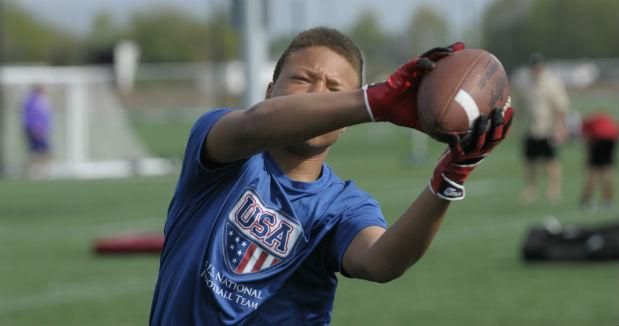| 8 – Balance & Coordination |

What is balance and coordination?
Balance and coordination are the ability to maintain a controlled body position during task performance, whether it is sitting at a table, walking the balance beam or stepping up onto a curb. To function effectively across environments and tasks, we need the ability to maintain controlled positions during both static (still) and dynamic (moving) activities.
Static balance is the ability to hold a stationary position with control (e.g. “Freeze” or “statue” games). Dynamic balance is the ability to remain balanced while engaged in movement (e.g. running or bike riding).
Why are balance and coordination important?
Age appropriate balance and coordination allows the child to be involved in the sports participation with a reasonable degree of success as it aids fluid body movement for physical skill performance (e.g. walking a balance beam or playing football). The involvement in sport is helpful in maintaining self regulation for daily tasks as well as developing a social network and achieving a sense of belonging in a community or social setting. It also helps children develop and maintain appropriate controlled body movement during task performance which, when effective, limits the energy required thus minimizing fatigue.
With good balance and coordination there is less likelihood of injury as the child is likely to have appropriate postural responses when needed (e.g. putting hands out to protect themselves when they fall off their bike). The physical attributes of balance and coordination also allow appropriate posture for table top tasks and subsequent success at fine motor tasks.
What are the building blocks necessary to develop balance and coordination?
Attention and concentration: The ability to maintain attention to a specific task for an extended period of time as the core strength is not challenged.
Body Awareness: Knowing body parts and understanding the body’s movement in space in relation to other limbs and objects for negotiating the environment or ball and bike skills.
Bilateral integration: Using two hands together with one hand leading: e.g. holding a tennis racquet with the non-dominant hand with the ‘helping’ non-dominant hand holding and stabilizing only between hits.
Crossing Mid-line: The ability to cross the imaginary line running from the child’s nose to pelvis that divides the body into left and right sides, which also influences hand dominance.
Hand eye coordination: The ability to process information received from the eyes to control, guide and direct the hands in the performance of a given task such as handwriting or catching a ball.
Hand Dominance: The consistent use of one (usually the same) hand for task performance which is necessary to allow refined skills to develop.
Muscular strength: A muscles ability to exert force against resistance (e.g when climbing a tree to push or pull up).
Muscular endurance: The ability of a singular muscle or group of muscles to exert force repeatedly against resistance to allow sustained physical task engagement.
Self regulation: The ability to obtain, maintain and change alertness level appropriate for a task or situation which then allows better attention to the task.
Postural Control: The ability to stabilize the trunk and neck to enable coordination of the limbs for controlled task performance.
Body Awareness (Proprioception): The information that the brain receives from the muscles and joints to make us aware of body position and body movement which in turn allows skills to become ‘automatic’.
Sensory processing: The accurate processing of sensory stimulation in the environment as well as in our own body for quick and physically appropriate responses to movement.
Isolated movement: The ability to move an arm or leg while keeping the remainder of the body still needed for refined movement (e.g. throwing a ball on handed or swimming freestyle).
This session focuses on:
– Maintaining the body’s center of gravity within the base of support with minimal postural sway.
– Ball/wall push-ups.
– Wheelbarrows
– Handstand against a wall
– Standard crunches on an exercise ball
– Balance on all fours
– Push-ups on a stability ball
– Single-side stabilization

